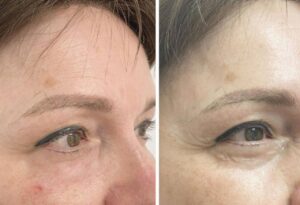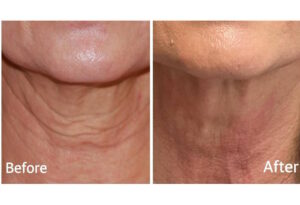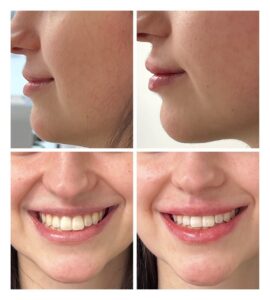Dermal Fillers
What are dermal fillers?
Dermal fillers are used to help restore the look of fullness that’s common in youth. Dermal fillers can temporarily mimic the return of the facial structure of your youth by adding volume.
Dermal fillers can be composed of a variety of substances, some naturally occurring and some synthetic. One of the most common compounds used in dermal fillers is hyaluronic acid (HA). HA is a naturally occurring substance found in our skin, and it plays a major role in keeping skin hydrated and volumized. HA fillers, depending on their specific chemical makeup, can last from six months to much longer before being gradually absorbed by the body.
One of the main benefits of HA fillers, aside from their natural appearance when injected, is that they can be dissolved by a special solution in case of an adverse event, or if the person dislikes the appearance. Also, most HA fillers are premixed with lidocaine, a numbing agent, to maximize comfort during treatment.
Other available dermal fillers include those made from calcium hydroxylapatite, poly-L-lactic acid, polymethyl methacrylate, and autologous fat (fat that is transplanted from another part of your body). Calcium hydroxylapatite is a mineral-like compound naturally found in human bones. It has been used in dentistry and reconstructive plastic surgery for years with a long track-record of safety. Poly-L-lactic acid is a synthetic filler that helps to stimulate collagen production. This filler is different from other fillers because its results are gradual; volumization occurs over several months as it stimulates the body to produce collagen. Polymethyl methacrylate is a semi-permanent filler. While it is more durable compared to other more readily biodegradable fillers, it has potential complications such as forming lumps or being visible under the skin.
Each of these substances has its own pros and cons, as well as a unique density, longevity, and texture, which means a particular material may be more or less suited to a specific area of the face or desired result. A medical professional will thoroughly evaluate any specific areas of concern, understand what you hope to get out of the procedure, and review what to expect before, during, and after the treatment to ensure the best cosmetic outcome.
The product your doctor chooses is largely dependent on the area they’ll be treating.
Fillers are commonly used in the depressions around the corners of the mouth (Marionette lines), nasolabial folds (Smile lines), Cheekbones, Under eye (Infra orbital hollow ), Chin, Jowls and Lower face sagging.
It’s important to know that you aren’t going to get facelift results from nonsurgical treatments like Botox or dermal fillers. They can’t replace surgery, but they can improve your appearance.




